Themed collection Probe and chip approaches to cell analysis

Editorial – probe and chip approaches to cell analysis
This Editorial introduces Analyst's themed collection on probe and chip approaches to cell analysis, guest edited by Jonathan Cooper and Luke Lee.

Analyst, 2014,139, 3205-3205
https://doi.org/10.1039/C4AN90044H
Microfluidic approaches for epithelial cell layer culture and characterisation
Novel in vitro models of epithelia in which the in vivo microenvironment of epithelial cells is precisely reconstituted can be realised with microfluidic biochips.
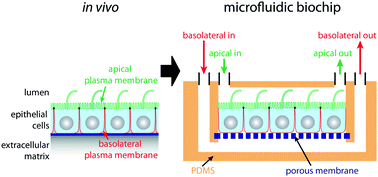
Analyst, 2014,139, 3206-3218
https://doi.org/10.1039/C4AN00056K
Micropatterning neuronal networks
A simple and effective method for patterning primary neuronal networks and circuits.
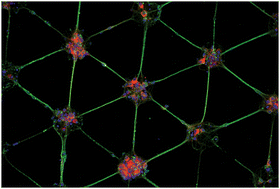
Analyst, 2014,139, 3256-3264
https://doi.org/10.1039/C4AN00608A
High-throughput and automatic typing via human papillomavirus identification map for cervical cancer screening and prognosis
Human papillomavirus (HPV) identification with a combination of HPV screening system and restriction fragment length polymorphism (RFLP) genotyping system.
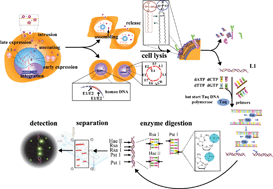
Analyst, 2014,139, 3330-3335
https://doi.org/10.1039/C4AN00329B
Simultaneous study of subcellular exocytosis with individually addressable multiple microelectrodes
Spatial and temporal resolution of single cell exocytosis study with multiple microelectrodes.

Analyst, 2014,139, 3290-3295
https://doi.org/10.1039/C4AN00058G
Reversible and selective luminescent determination of ClO−/H2S redox cycle in vitro and in vivo based on a ruthenium trisbipyridyl probe
A reversible and highly selective luminescent probe was successfully employed for the determination of ClO− and H2S and for monitoring the ClO−/H2S redox cycle both in vitro and in vivo.
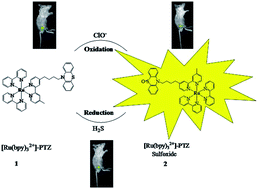
Analyst, 2014,139, 3324-3329
https://doi.org/10.1039/C4AN00331D
An ultra-high-throughput spiral microfluidic biochip for the enrichment of circulating tumor cells
We demonstrate the high-throughput and high-resolution separation of rare circulating tumor cells (CTCs) from blood using a multiplexed spiral microfluidic device.

Analyst, 2014,139, 3245-3255
https://doi.org/10.1039/C4AN00355A
Microfluidic-SERS devices for one shot limit-of-detection
Microfluidic sensing platforms facilitate parallel, low sample volume detection using various optical signal transduction mechanisms.
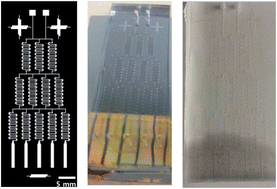
Analyst, 2014,139, 3227-3234
https://doi.org/10.1039/C4AN00357H
Cell specific electrodes for neuronal network reconstruction and monitoring
Grafting of proteins specific to neurons was used to demonstrate specific addressing of electrodes for neuronal network reconstruction and monitoring.
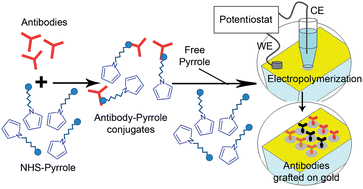
Analyst, 2014,139, 3281-3289
https://doi.org/10.1039/C4AN00048J
Single cell growth rate and morphological dynamics revealing an “opportunistic” persistence
A new form of bacterial persistence was observed. Normal E. coli cells inhibited by amoxicillin recovered from the killing process when they had an opportunity to utilize the cytoplasm released from lysed cells close-by.
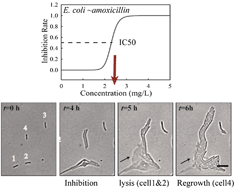
Analyst, 2014,139, 3305-3313
https://doi.org/10.1039/C4AN00170B
Microchip electrophoresis with amperometric detection method for profiling cellular nitrosative stress markers
Microchip electrophoresis method for the simultaneous determination of intracellular nitrosative stress markers and endogenous antioxidants in native and stimulated macrophage cells.
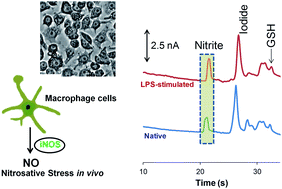
Analyst, 2014,139, 3265-3273
https://doi.org/10.1039/C4AN00185K
The grab-and-drop protocol: a novel strategy for membrane protein isolation and reconstitution from single cells
Samples of cell membrane were non-destructively removed from individual, live cells using optically trapped beads, and deposited into a supported lipid bilayer mounted on an S-layer protein-coated substrate.
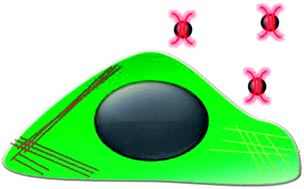
Analyst, 2014,139, 3296-3304
https://doi.org/10.1039/C4AN00059E
CotA laccase: high-throughput manipulation and analysis of recombinant enzyme libraries expressed in E. coli using droplet-based microfluidics
A high-throughput cell analysis and sorting platform using droplet-based microfluidics is introduced for directed evolution of recombinant CotA laccase expressed in E. coli.
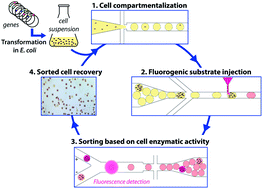
Analyst, 2014,139, 3314-3323
https://doi.org/10.1039/C4AN00228H
Absolute quantification of protein copy number using a single-molecule-sensitive microarray
We report the use of a microfluidic microarray incorporating single molecule detection for the absolute quantification of protein copy number in solution.
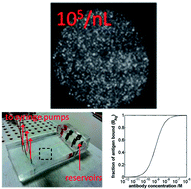
Analyst, 2014,139, 3235-3244
https://doi.org/10.1039/C4AN00091A
3D-printed fluidic devices enable quantitative evaluation of blood components in modified storage solutions for use in transfusion medicine
A fluidic device constructed with a 3D-printer can be used to investigate stored blood components with subsequent high-throughput calibration and readout with a standard plate reader.

Analyst, 2014,139, 3219-3226
https://doi.org/10.1039/C3AN02357E
Probing hypoxia-induced staurosporine resistance in prostate cancer cells with a microfluidic culture system
A microfluidic system for cell culture and drug response studies was developed to elucidate the effects of hypoxia on drug susceptibility.
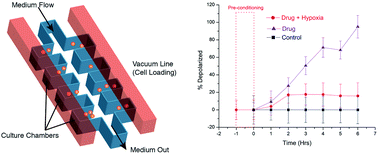
Analyst, 2014,139, 3274-3280
https://doi.org/10.1039/C3AN02324A
About this collection
The aim of this collection of articles is to cover a wide range of aspects of cell analysis based on recent microfluidic and lab-on-a-chip technologies by highlighting analytically important developments and novel applications. Guest Edited by Jonathan Cooper and Luke Lee. New articles will be added to this collection as they are published.